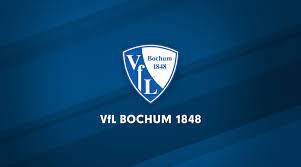More than just a stadium, the Allianz Arena is a masterpiece of modern architecture and a symbol of football excellence. This iconic venue in Munich lights up in stunning colors, creating an electrifying atmosphere for every match. As the fortress of Bayern Munich, it offers an unforgettable experience for fans worldwide. Whether you’re captivated by its futuristic design or the passion of game day, the Allianz Arena stands as one of football’s greatest landmarks. For those who love the sport, 789win is the perfect place to stay updated and đăng ký 789win to enjoy top-tier betting action.
The History and Development of Allianz Arena
To truly understand the significance of the Allianz Arena, one must delve into its rich history and the inspirations behind its creation.
The concept and inspiration behind its construction
The vision for the Allianz Arena was born out of a desire to create a state-of-the-art facility that could elevate the city of Munich onto the global football stage. The need for a new stadium arose as Bayern Munich sought to replace their previous home, the Olympiastadion, which, though historic, lacked modern amenities and the capability to host large-scale events.
German architect Herzog & de Meuron conceptualized the design with the intention of crafting a venue that would be as much a piece of art as it is a functional sports arena. The idea was to create a stadium that blended form and function, reflecting the dynamism of Bayern Munich and the vibrant culture of Munich itself.
Inspired by the traditional aspect of Bavarian architecture, the design also sought to bring a modern twist, ensuring that it stood out on the global map. The facade, resembling a giant inflated balloon, became one of its trademark features and a representation of creativity and innovation in stadium design.
The architectural design and unique features
The architectural significance of the Allianz Arena cannot be overstated. Its exterior is clad in a remarkable ETFE membrane, allowing light to pass through while remaining flexible enough to withstand the elements.
This membrane enables the arena to illuminate in different colors based on the teams playing, a striking display that transforms it into a living, breathing piece of art. The ability to switch between shades of red, white, and blue adds another layer of excitement during match day, capturing the fervor of the fans and amplifying the emotions associated with live football.
Additionally, the seating arrangement within the stadium has been meticulously designed to optimize sightlines, ensuring that every spectator experiences the game from the best possible vantage point. With steeply tiered seating and advanced acoustics, the Allianz Arena has established itself as a premier venue for not just football, but also concerts and various cultural events.
Timeline of its construction and opening
Construction of the Allianz Arena began in 2002, rooted in the ambition to elevate Munich’s sporting landscape. The project faced various challenges, including budget constraints and logistical issues, yet persevered thanks to strategic planning and execution.
By May 2005, the Allianz Arena was officially completed and opened its doors to the public. The inaugural match was held shortly thereafter, featuring FC Bayern Munich against AC Milan. This moment marked a new chapter in football history, ushering in a new era characterized by modernity, technological advancement, and unparalleled fan engagement.
Over the years, the arena fostered a community spirit, serving as a gathering place for fans of all backgrounds and ages. From viewing parties to concerts, the Allianz Arena has welcomed countless visitors, establishing itself as a cultural landmark in Munich.
Allianz Arena: Home of Bayern Munich
As the home ground of Bayern Munich, the Allianz Arena plays an integral role in the club’s identity and success.
The impact of the stadium on Bayern Munich’s success
Bayern Munich is one of the most decorated clubs in football history, and the Allianz Arena has significantly contributed to that legacy. Since moving into the stadium, the club has consistently achieved remarkable success, winning multiple Bundesliga titles and domestic cups.
The modern facilities have allowed Bayern Munich to attract world-class talent, providing players with top-notch training environments and resources necessary for peak performance. Playing at the Allianz Arena instills a sense of pride and belonging among players, creating a bond that translates into exceptional teamwork and dedication on the field.
The stadium’s atmosphere becomes electric during match days, with passionate supporters filling the seats and contributing to an environment that motivates players to perform at their best. This synergy between the stadium and the team is a vital component of Bayern Munich’s sustained dominance in German and European football.
Memorable matches and historical moments
Throughout its existence, the Allianz Arena has witnessed numerous memorable matches that have etched themselves into the annals of football history. From thrilling comebacks to nail-biting finals, the stadium has hosted it all.
One of the most iconic moments occurred during the 2012 UEFA Champions League Final when Bayern Munich faced Chelsea. Despite dominating much of the match, Bayern lost in dramatic fashion after a penalty shootout. The atmosphere in the stadium was palpable, with fans riding an emotional rollercoaster—a perfect illustration of how deeply connected the supporters are to their club and home ground.
Moreover, the Allianz Arena has seen extraordinary performances by legendary players such as Franck Ribéry, Arjen Robben, and Robert Lewandowski, who have graced the pitch and left a lasting mark on the hearts of fans. These unforgettable moments serve as a reminder of the powerful narratives that unfold within its walls.





